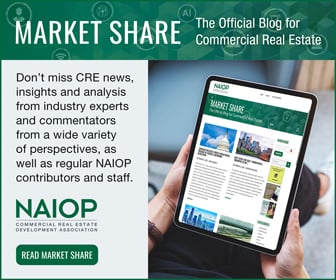U.S. Ports Anchor Growing Demand for Industrial Space in Select Markets

A new NAIOP research brief examines the relationship between imports and site selection for logistics centers.
Delays, shortages and price inflation associated with COVID-19’s disruption of global supply chains have brought unprecedented attention to U.S. ports and their importance to the American economy. In the early months of the pandemic, lockdowns in Asia and then the U.S. and Europe paused most maritime trade. By the summer of 2020, American consumers — buoyed by stimulus checks and with limited appetite to spend on services — began spending more on consumer goods than they had before the pandemic. Retailers quickly depleted their inventories and ramped up orders for goods, leading to a surge in imports. At the same time, the U.S. logistics industry has struggled with labor shortages and limited available warehouse space near key ports. These factors have contributed to long lines of container ships outside major U.S. ports and have slowed the distribution of imported goods across the U.S.
The surge in trade has buttressed already strong demand for industrial real estate in major port markets, but will demand for this space fade once import volumes normalize? “Seeing Past the Pandemic: Industrial Demand and U.S. Seaports,” a brief recently published by the NAIOP Research Foundation, examines the relationship between activity at the largest U.S. ports and demand for industrial space in adjacent markets. The authors of the brief, Avison Young researchers Brian Harper and Aaron Ahlburn, reviewed historical trends in shipments to and from individual ports, local logistics employment, and rents, vacancy rates and absorption rates in major port markets. Building on these observations, they developed a regression analysis that models the relationship between port activity, truck traffic and industrial space absorption to predict how changes in import volumes will affect space demand in the largest port markets. Their analysis suggests that industrial demand will remain robust near U.S. ports so long as imports continue to grow.
Import and export volumes at major U.S. ports have increased substantially over the past 15 years, despite dips in trade volumes following the global financial crisis, during trade disputes in 2019 and in the first months of the COVID-19 pandemic. Rising import volumes have supported improving fundamentals for industrial real estate in most U.S. port markets. The Los Angeles-Long Beach port complex has experienced the largest gains in import volume, contributing to a decline in industrial vacancies and an increase in rents despite increased construction activity in recent years. Many smaller ports have also benefited, with some experiencing faster relative increases in demand for industrial space. The opening of larger locks at the Panama Canal in 2016 was accompanied by capacity expansions at several East Coast ports. Some eastern port markets, such as Savannah, Georgia, have experienced a particularly sharp increase in absorption following the expansion of the canal.
The research brief includes an analysis of geospatial data on truck trips from major ports. The authors examined the distance and destination of these trips to provide a more detailed profile of the industrial real estate that serves each port. They then combined this analysis with historical data on trade volumes and local real estate markets to create a model that describes the relationship between import volumes and industrial occupancy in each major port market. This model confirms that import volumes have a significant effect on industrial absorption. The effect varies by market, however. The more that a market’s industrial activity is linked to a port, the more industrial absorption is affected by changes in import volume.
While the COVID-19 pandemic has led to unprecedented congestion at U.S. ports, the brief’s analysis of long-term trends suggests that demand for industrial space in major port markets is likely to remain strong long after the maritime traffic jam has cleared. Developers and investors can refer to the brief’s findings to identify the markets that are most likely to benefit from future increases in trade.
Shawn Moura, Ph.D., is the director of research for NAIOP.
|
Get the Report To view and download “Seeing Past the Pandemic: Industrial Demand and U.S. Seaports,” visit naiop.org/Research-and-Publications/Research-Reports. |



